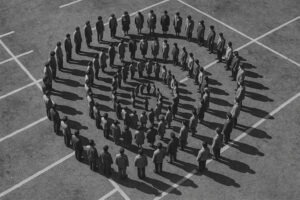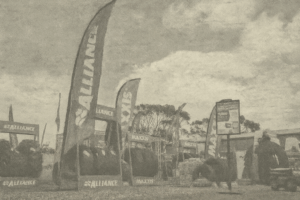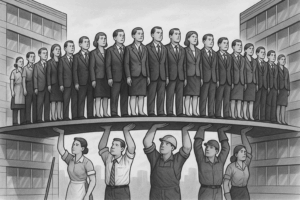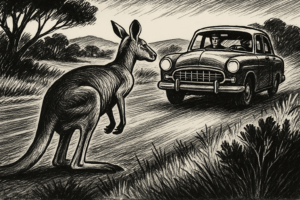Choosing a new direction in life often feels like walking through a dark forest with nothing but a narrow-beamed torch. That’s what it’s been like for me these past few months. Anthropology has become my light—unexpected, illuminating, and sometimes a little blinding. Every idea it reveals seems full of potential: I could study this, explore that, unpack a different thread entirely. From a distance it would looked like someone had tied a flashlight to a Tassie devil.
But with each possibility comes a reality check.
Like many at mid-life, I don’t have the luxury of starting entirely from scratch. I have to work. I have a mortgage. Superannuation isn’t just a vague idea anymore—it’s a plan. So, my reinvention needs structure, strategy, and a fair amount of realism. It’s not about abandoning everything I’ve built—it’s about shaping something new from where I already stand.
And recently, something has started to take shape. Inspired by a graduate Heritage advisor role I saw. My time on the Moorabool Heritage Committee also had an influence, I may have not realised it at the time.
So over the past few weeks, I’ve been writing more and more about heritage. At first, it felt like a side interest, something adjacent to my broader anthropological curiosity. But as I wrote, I noticed a pattern: this wasn’t a tangent—it was a direction. Heritage kept opening doors. More importantly, it helped narrow the blur of options into something with traction.
That’s when the words came to me: Heritage Anthropology.
It’s not a common phrase, and that’s part of what I love about it. It sits at the intersection of disciplines, pulling together threads from cultural heritage, archaeology, public history, digital storytelling, and, of course, anthropology. It’s about memory, identity, place, and the politics of preservation. It’s about whose stories are told—and whose are ignored.
The only problem? I don’t have a formal background in heritage studies. What I do have is a growing body of self-driven research, writing, and critical reflection. That led me to something practical: a Master of Cultural Heritage at Deakin University. It’s designed to bridge this kind of gap—between experience and qualification. Even better, it offers a PhD pathway.
If all goes well, I could complete the program in 12–18 months. That’s not just doable—it’s motivating.
I already have a research focus in mind: the decolonisation of heritage, particularly in suburban Australia. This question is layered and urgent: how do we rethink heritage in spaces where First Nations presence has been systematically erased or tokenised? How can digital tools help bring multiple layers of meaning—deep time, colonial history, contemporary life—into a single shared conversation?
From there, I hope to expand the work into a PhD project focused on Heritage Digital Futures. I want to explore how emerging technologies like VR, XR, and digital archives can be used not just to preserve the past, but to reshape how we engage with it—ethically, inclusively, and with a clear eye on power.
Starting afresh at mid-life isn’t easy so it will be a slow evolution. But this path feels right. It brings together my background in strategic thinking and storytelling with my new love for anthropology and my long-standing respect for place.
It’s not a leap. It’s a considered step. And for once, the path ahead feels—if not fully lit—at least visible.
Thanks for reading. If you’re walking a similar path or curious about Heritage Anthropology, I’m always up for a thoughtful conversation.




